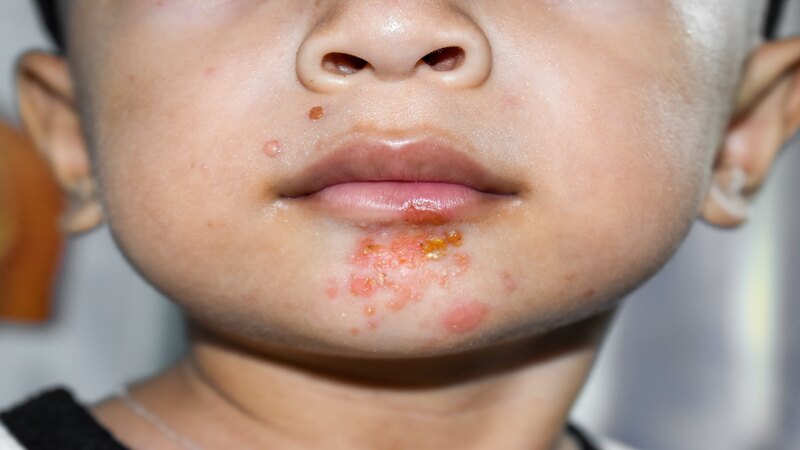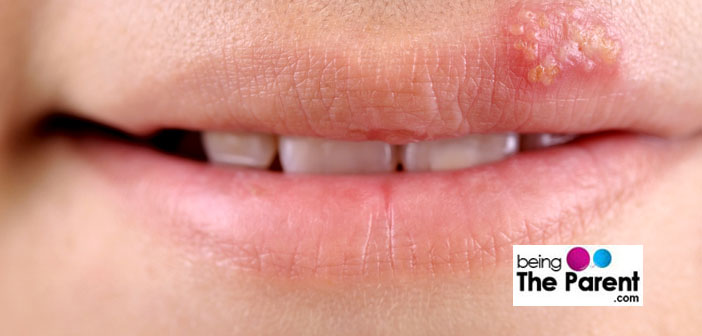
A mother’s concern about her baby’s skin starts at the very first diaper rash. As the child grows, from infancy through adolescence, the chances of the contracting skin conditions also increase. Some of these skin conditions are highly contagious. Impetigo is one of the most common skin infections seen among the children, though it rarely infects adults.
What Is Impetigo?
Impetigo is most commonly seen skin infection found amidst the children. Red sores can appear on the skin. When these sores break open, fluid oozes out and the yellow- brown crest develops. These blisters can be itchy, but are generally are not painful. Swollen lymph nodes may also be observed along with impetigo.
It is caused by bacteria and is highly contagious.
Which Microbe Causes Impetigo?
Impetigo gets caused when a child is exposed to the infectious microbes which can be any of these two bacteria – Staphylococcus aureus and Streptococcus pyrogens. The blisters usually appear one to ten days after the infection, and generally begin with the nose and the mouth.
Which Age Group Of Children Are Usually Affected By Impetigo?
These skin infections are usually found to affect preschoolers and school-aged children especially in the age group of 2 – 6-years. So this infection is also called ‘school sores’. Children are found to be more prone to this infection if they already have an irritated skin due to other skin problems like insect bites, dermatitis, eczema, or even the skin has already been open due to some cuts or scrapes.
Which Area Is Usually Affected By Impetigo?
Even though it can affect any area, it is usually found around nose and mouth, hands and forearms. This is so because children usually touch have the habit of touching nose and mouth after they touch anything. In case the infection is found in infants, it is usually in his diaper area develops after a diaper rash.
How Does Impetigo Spread In Children?
Impetigo will spread through close contact with infected skin. When children share toys, cloths, and towels or bed the chances of the infection spreading to each other also increases. Scratching the infected area (which is always done by kids) and touching here and there will spread the infection to other parts of the body. Impetigo bacteria usually thrive in a warm and humid environment.
What Are The Types Of Impetigo?
There are three types of impetigo, explained as below:
- Bullous impetigo is characterized by large fluid filled blisters that last longer on the skin without bursting. This infection is caused only by staphylococcus. This bacteria produces a toxin which reduces the adhesion between the cells and causes the separation between epidermis, the upper layer of skin and dermis, the lower layer of skin. The yellow colored liquid will fill the space. These bullae will break and leave the red raw skin below to expose with a tattered edge.
Commonly occurs in children under age two - Non-bullous impetigo is a more common form, characterized by blisters that burst in due course of time. It is caused by both staphylococcus and streptococcus. Honey colored crusts are formed after the blisters burst. This type of skin infections is more often found to start on the face especially around the nose and mouth.
Swollen lymph nodes are associated with non-bullous impetigo - Ecthyma is the most serious form of impetigo which causes deeper erosions of the skin into dermis because it effects the dermis rather than the upper layer of skin. In this case, the blisters can be very painful and turn to be open sores

What Are The Symptoms Of Impetigo?
Developing sores and blisters on the skin are the typical symptoms of impetigo.
- These sores will gradually increase in size, from the size of a small pimple or an insect bite to as round as a big coin and also grow in numbers
- Sores will begin as red spots which change to a blister that break open in the due course
- The sores are not painful as they look but can be itchy
- Yellowish brown crusts similar to honey or brown sugar cover the affected area
How Is Impetigo Diagnosed?
Impetigo can be easily diagnosed by the doctor by merely examining the infected skin area of your child. In some rare cases, the doctor will remove a small sore carefully and send it to the lab to identify the bacteria.
How Can Impetigo In Children Be Treated?
The treatment depends on the type and intensity of infection. If the infection is of non-bullous form and affects a small area of skin, impetigo can be treated with antibiotic ointment.
On the other hand, if the infection is bullous and spreads to another area of the body, the ointment may not able do the job. In such cases, intake of antibiotic pills or liquid suspensions are prescribed by the doctor. Usually, seven to ten days of antibiotic course is suggested. You should complete your child’s course. Otherwise, the recurrence of the infection and antibiotic resistance can develop.
In addition to the treatment prescribed by the doctor you can also try some home treatment that will not do any harm. Like, cleaning the affected area at least three to five times a day using water or an antibacterial wash like Cetaphil. Never scrub the area during the cleaning process. And remember to pat dry as the further irritating of the skin can result in spreading the infection.
How Can Impetigo Be Prevented?
- Special care should be given for cuts and scrapes as they can be a cause of impetigo
- Cut the finger nail closely as this will minimize the injury to the skin when the child scratches
- Never share the child’s sheet, towels or any personal hygiene things with others
- Hygiene is an important criterion. Clean the affected area several times
- Please don’t send your child to daycare or school during the infection period. Not only the attention at home will provide him quick relief, but also the other children in the class won’t be at the risk of infection
- Make him wear light, smooth pure cotton dress which are airy
- Wash the infected bedsheets, towels and cloths separately in hot water to prevent the infection to spread from other members of the family
- For the same reason clean the infected surfaces with antibacterial liquid frequently
- Avoid sports that include skin to skin contacts like the football
When To Worry About Impetigo?
- Whenever your child’s skin shows changes, let it be even be an insect bite, watch the variation closely
- Don’t hesitate to consult your doctor when you doubt the sign is similar to impetigo. Call your doctor when there are no significant changes even after undergoing the treatment for three days
- Developing fever, rash becoming red, warm and tender to touch, take your kid for examination by the doctor
- No need to worry as this infection is not dangerous. Early the treatment, faster the cure
